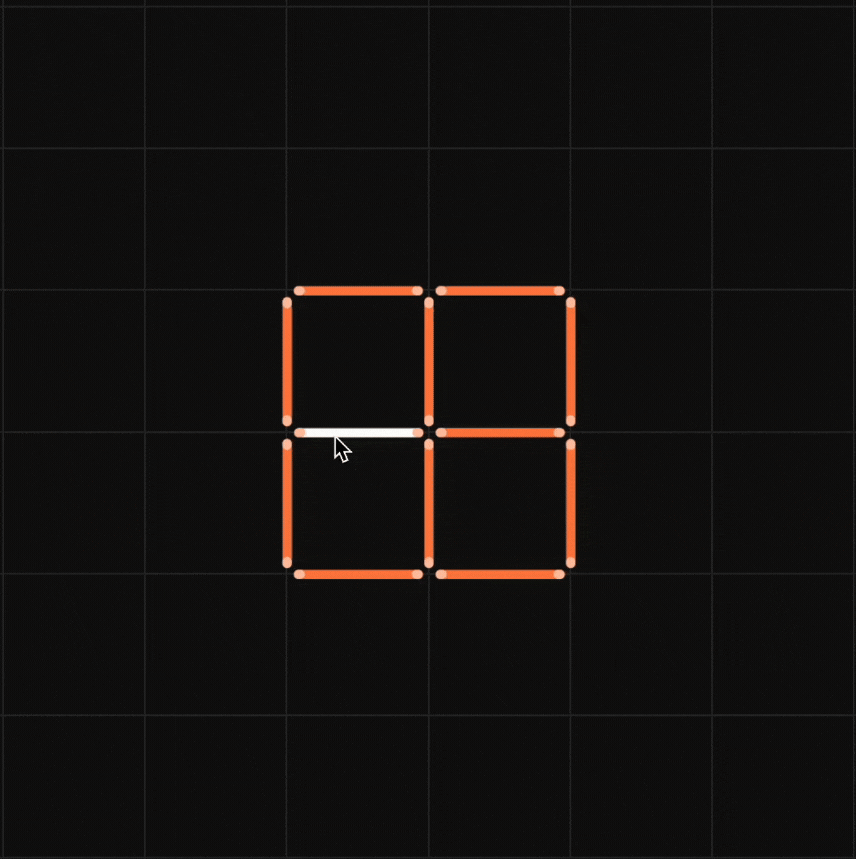

Perpendicular Line
Perpendicular lines are the two distinct lines that intersect each other at 90°. Have you noticed anything common between the joining corners of your walls, or the letter 'L'? They are the straight lines known as perpendicular lines that meet each other at a specific angle - the right angle.
We say that a line is perpendicular to another line if the two lines meet at an angle of 90°. Let us understand the concept of perpendicular lines, the perpendicular sign, the difference between parallel and perpendicular lines, along with some perpendicular lines examples.
| 1. | What is Perpendicular? |
| 2. | What are Perpendicular Lines? |
| 3. | Properties of Perpendicular Lines |
| 4. | How to Draw Perpendicular Lines? |
| 5. | Perpendicular and Parallel Lines |
| 6. | FQAs on Perpendicular |
What is Perpendicular?
A perpendicular is a straight line that makes an angle of 90° with another line. 90° is also called a right angle and is marked by a little square between two perpendicular lines as shown in the figure given below. Here, the two lines intersect at a right angle, and hence, are said to be perpendicular to each other.

Now, let us look at the examples of lines that are not perpendicular. These lines are either not meeting at all, or intersecting at an angle that is not 90°. Hence, they are not perpendicular.

What are Perpendicular Lines?
Perpendicular lines, in math, are two lines that intersect each other and the angle between them is 90°.
Perpendicular Sign
When two lines are perpendicular, we express them using a perpendicular sign ⊥. For example, if line ¯¯¯¯¯¯¯¯AB is perpendicular to line ¯¯¯¯¯¯¯¯¯CD, we express it as ¯¯¯¯¯¯¯¯¯AB⊥¯¯¯¯¯¯¯¯¯CD.

Perpendicular Shapes
Perpendicular Shapes are those shapes that have at least two sides that join to form an angle of 90°. These are the shapes that have perpendicular lines in them. A few of them are:
Properties of Perpendicular Line
We have already seen how the perpendicular lines look like. If there is an 'L' shape in a figure, the corresponding angle at the vertex is a right angle. Perpendicular lines always intersect each other, however, all intersecting lines are not always perpendicular to each other. The two main properties of perpendicular lines are:
- Perpendicular lines always meet or intersect each other.
- The angle between any two perpendicular lines is always equal to 90°
How to Draw Perpendicular Lines?
To draw a perpendicular line, all we need is a scale (ruler), a compass, or a protractor. We will discuss how to draw perpendicular lines step by step using a compass and a protractor. So, we can draw perpendicular lines for a given line in two ways.
- Using a protractor
- Using a compass
Drawing a Perpendicular Line Using Protractor
A protractor, in math, is considered an important measuring instrument in the geometry box. This tool not only helps us measure an angle in degrees, but also helps in drawing perpendicular lines. To draw a perpendicular line at point P on the given line, follow the steps given below.
- Step 1: Place the baseline of the protractor along the line such that its center is at P.
- Step 2: Mark a point B at 90° of the protractor.

- Step 3: Remove the protractor and join P and B. So, BP is a line that is perpendicular to the given line.

Drawing a Perpendicular Line Using Compass
We can also draw a perpendicular line using a compass. To draw a perpendicular line at a point P on a line, follow the steps given below.
- Step 1: Adjust the compass to the desired radius.
- Step 2: Placing the pointer of the compass at P, construct a semi-circle that cuts the line at A and B.

- Step 3: Without disturbing the radius of the compass, draw two arcs that cut the semi-circle at C and D by placing the pointer of the compass at A and B respectively.

- Step 4: Keeping the same radius, draw two intersecting arcs that intersect at Q by placing the pointer of the compass at C and D.

- Step 5: Join P and Q, which forms a perpendicular on the given line. Now, PQ is perpendicular to AB.
Perpendicular and Parallel Lines
Two straight lines are said to be parallel if they are equidistant from each other and never meet, no matter how much they may be extended in either directions. Observe the lines shown below to see the difference between perpendicular lines and parallel lines. In the figure, AB is perpendicular to CD and PQ is parallel to RS.

The symbol used to show that the lines are parallel is ||, and we express it as: PQ || RS. You can find parallel lines all around you. For example, zebra crossings on the road or the opposite sides of your ruler, and many others too! The table shown below differentiates between parallel lines and perpendicular lines.
Difference Between Parallel and Perpendicular Lines
The following table shows the main difference between parallel and perpendicular lines.
| Parallel Lines | Perpendicular lines |
|---|---|
| Parallel lines are those lines that do not intersect anywhere and are always the same distance apart. | Lines that intersect each other forming a right angle are called perpendicular lines. |
| Example: the steps of a straight ladder; the opposite sides of a rectangle. | Example: the corner of two walls; the letter 'L' |
| The symbol used to denote two parallel lines: || | The symbol used to denote two perpendicular lines: ⊥. |
☛ Related Articles:
Perpendicular Lines Examples
-
Example 1:
The two lines inside the kite intersect each other at right angles are perpendicular. List the total number of right angles formed at the intersection.

Solution:
Since the two lines AB and CD intersect each other at right angles, there are 4 right angles at the intersecting point. Hence, Angle AOD = Angle DOB = Angle BOC = Angle AOC = 90°.
-
Example 2:
In the following figure, AB is perpendicular to CD. If Angle BOC = 90°, then find the value of x.

Solution:
Since Angle BOC = 90°, we can write: x + 63° = 90°. Therefore, x = 27°
-
Example 3: State true or false:
a.) Perpendicular lines always meet or intersect each other.
b.) The angle between any two perpendicular lines is always equal to 60°
Solution:
a.) True, perpendicular lines always meet or intersect each other.
b.) False, the angle between any two perpendicular lines is always equal to 90°

FAQs on Perpendicular Line
What is Perpendicular?
Perpendicular means standing at right angles to the plane of the horizon. In other words, when anything is at an angle of 90° to a surface, line, a plane, or ground, it is said to be perpendicular to that surface.
What are Perpendicular Angles?
Perpendicular angles can also be referred to as right angles (90°). This means when two perpendicular lines intersect each other they form perpendicular angles.
What is the Perpendicular Symbol?
When any two lines are perpendicular, we express them using a perpendicular symbol (⊥). For example, if line CD is perpendicular to line EF, we write it as, CD ⊥ EF.
What is Perpendicular Lines Formula?
To find the slope of two lines we use the perpendicular lines formula. The perpendicular line formula is defined as the product of two slopes m1 and m2 is -1. It is mathematically expressed as (m1×m2 = -1) or m1 = -1/m2.
What is the Difference Between Parallel and Perpendicular Lines?
Perpendicular lines are those lines that intersect each other at right angles (90°). Parallel lines are those lines that do not intersect anywhere and are always the same distance apart.
Do Perpendicular Lines Touch Each Other?
Yes, one of the properties of perpendicular lines is that they intersect and touch each other.
How do You Know if Two Lines Are Perpendicular?
If two lines intersect each other making an angle of 90°, then those two lines are perpendicular to each other.
Are Diagonals of a Rhombus Perpendicular to Each Other?
The diagonals of a rhombus intersect each other at an angle of 90°, so we can say that the diagonals of a rhombus are perpendicular to each other.
State some Examples of Perpendicular Lines in Real Life.
A few examples of perpendicular lines in real life are:
- The two sides of a rectangle which meet each other.
- The intersection of the lines in the letter 'L'
- The edges of a notebook that join to form 90°.
What is a Perpendicular Triangle?
A perpendicular triangle is a triangle in which one interior angle is 90°. In other words, a perpendicular triangle is a right-angled triangle.
What are some Perpendicular Shapes?
Perpendicular shapes have at least two sides that join to form an angle of 90°. These shapes have perpendicular lines in them. A few of them are square, right-angled triangle and rectangle.
visual curriculum
